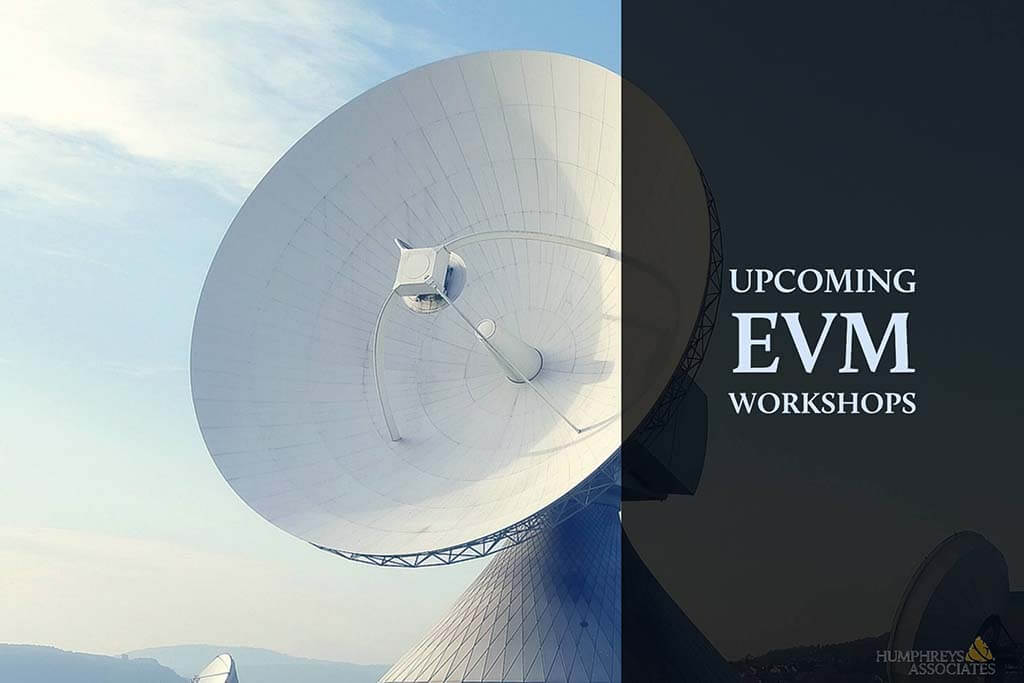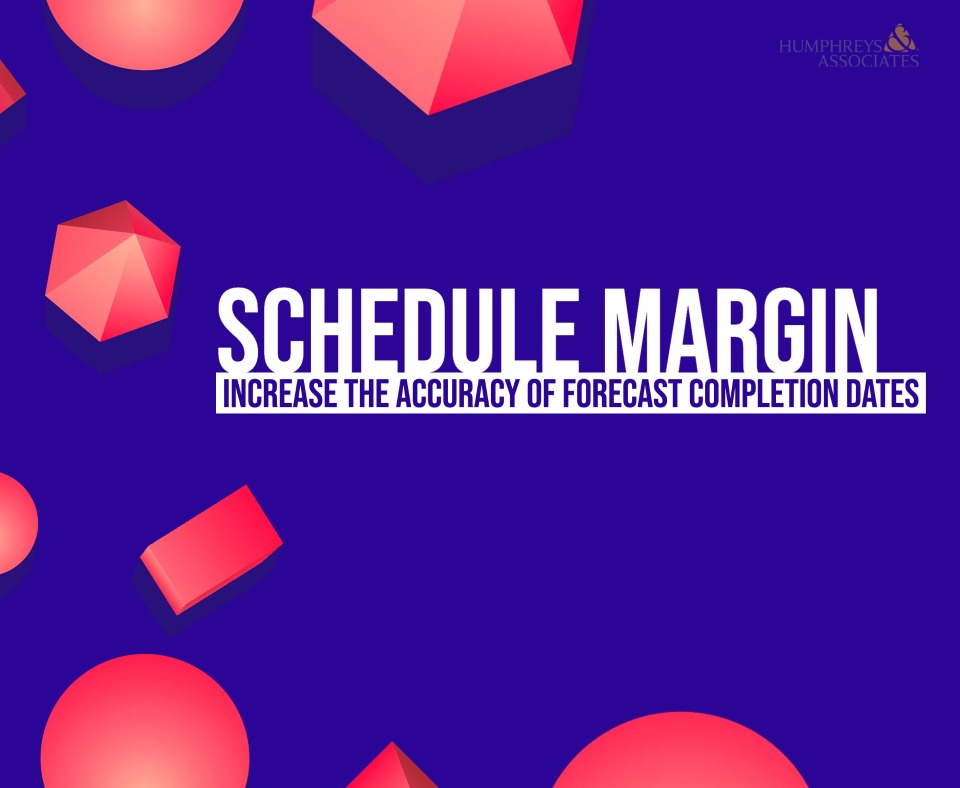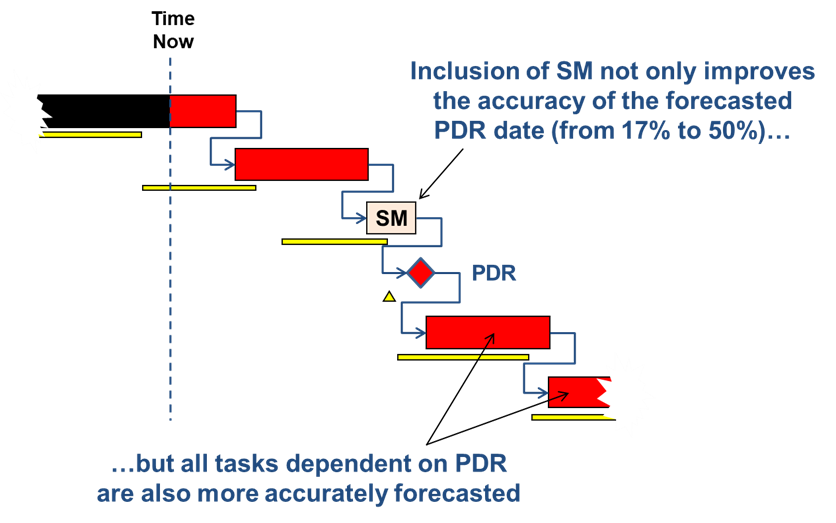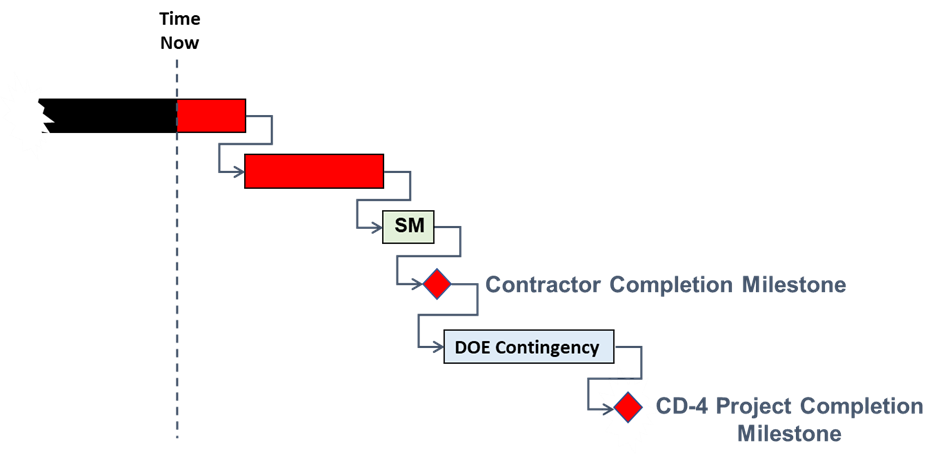Planning Ahead for the EIA-748 Standard for EVMS Revision E
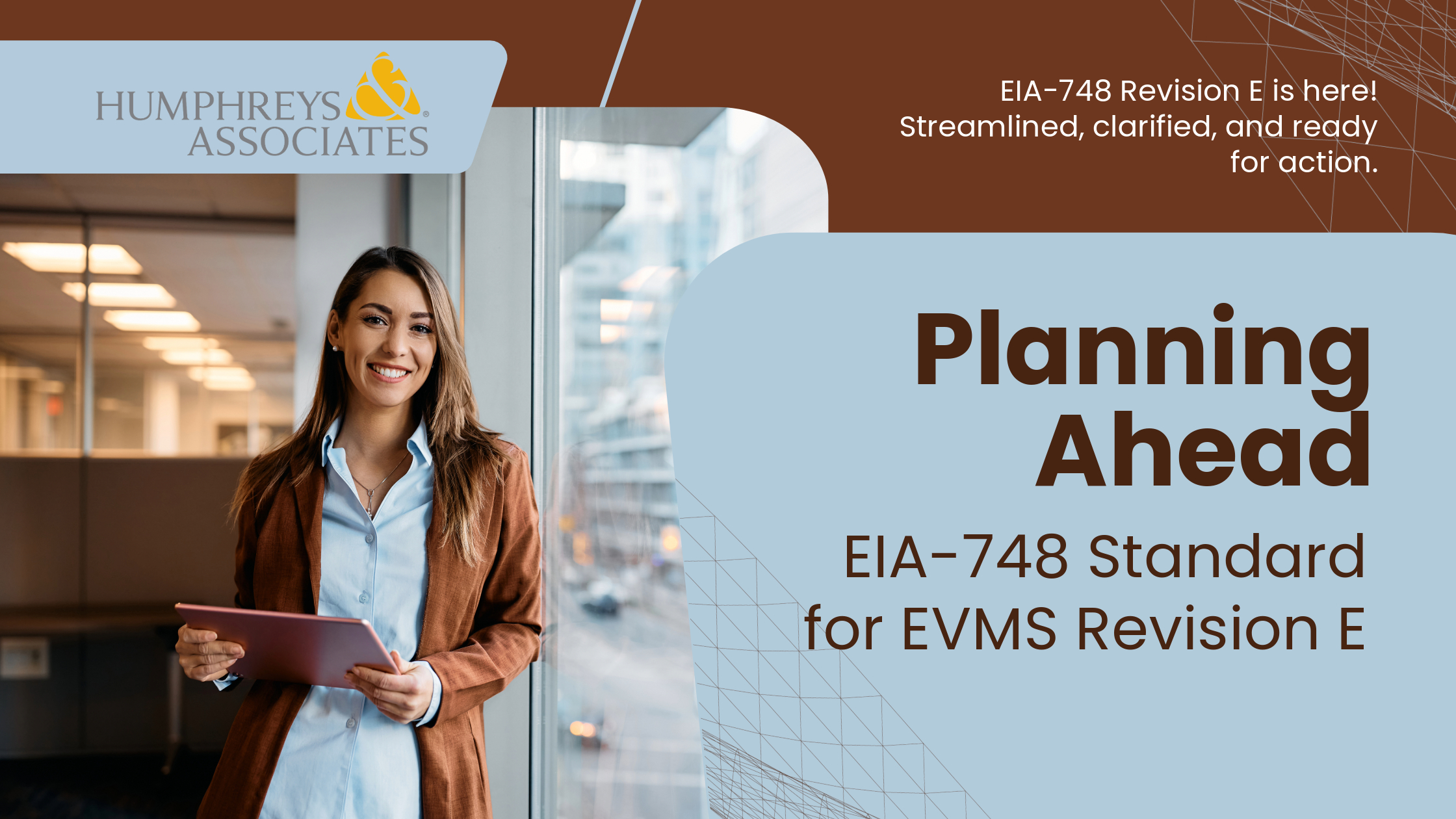
For anyone following the process to update the SAE EIA-748 Standard for EVMS Revision D to Revision E, the NDIA Integrated Program Management Division (IPMD) EIA-748 Committee is getting closer to the finish line. As the author and steward of the EIA-748 Standard for EVMS, the IPMD is responsible for working with the SAE International standards organization to maintain the EIA-748 following SAE’s protocols.
At the March 2025 IPMD meeting, the EIA-748 Committee briefed membership on the coming Revision E publication. A summary of the scope of the Revision E changes follows.
- Section 1, Scope of EVMS. General refresh of the Revision D content.
- Section 2, EVMS Guidelines. There are now 27 guidelines that were agreed upon and adjudicated with the joint government and industry team. This also included a general refresh of content in Section 2.6 Common Terminology.
- Section 3, EVMS Process Discussion. Mostly unchanged from Revision D with minor updates. The NDIA IPMD EIA-748 Intent Guide provides additional context to the guidelines in Section 2.
- Sections 4, System Documentation and Section 5, System Evaluation. General refresh of the Revision D content.
Following the current schedule, any comments for Revision E will be adjudicated by May 31, 2025 and finalized for publication. Revision E will then be available on the SAE web site for purchase. The next step for the NDIA IPMD EIA-748 Committee is to update and publish the IPMD EIA-748 Intent Guide for the Revision E set of 27 guidelines. This guide will be available for download from the NDIA IPMD Guides and Resources page once completed and approved by IPMD membership.
What’s the same and what’s different in the set of guidelines?
The guidelines are organized into the same five process categories with an update to the name of one category to improve clarity. As part of the guideline updates, the order of some of the guidelines changed to more accurately follow the typical project life cycle process, others were merged. Four guidelines were deleted. Two were added resulting in final set of 27 guidelines. In some instances, the guideline text was modified to improve clarity. A summary of these changes along with an impact assessment by category follows.
NOTE: The final order and/or text of the guidelines are subject to change as a result of the SAE comment and adjudication process. Refer to the published EIA-748-E for the official set of guidelines and text. The NDIA IPMD March presentation is available for download at the end of this blog. This presentation includes the full text for the revised set of guidelines.
| Guideline Map | Process Category: Organization | ||
|---|---|---|---|
| 748 D | 748 E | Guideline | |
| D 1 | E 1 | 2.1a | Decompose Scope Using a Work Breakdown Structure |
| D 2 | E 2 | 2.1b | Identify Organizational Responsibilities for the Work |
| D 5 | E 3 | 2.1c | Integrate WBS/OBS to Create Control Accounts |
| D 3 | E 4 | 2.1d | Integrate Management Processes Using the WBS and OBS |
D Guideline 4, Identify Overhead Management was deleted.
Assessment: No impact as E Guidelines 1 to 4 reflect the same requirements as D Guidelines 1, 2, 3, and 5.
| Guideline Map | Process Category: Planning, Scheduling and Budgeting | ||
|---|---|---|---|
| 748 D | 748 E | Guideline Description | |
| D 6 | E 5 | 2.2a | Schedule the Authorized Work |
| D 7 | E 6 | 2.2b | Identify Indicators to Measure Progress |
| D 8 | E 7 | 2.2c | Establish and Maintain a Time Phased Budget Baseline |
| D 9 | E 8 | 2.2d | Authorize Scope, Schedule and Budget by Cost Elements |
| D 10 | E 9 | 2.2e | Plan Scope, Schedule and Budget into WP/PPs |
| D 10, 12 | E 10 | 2.2f | Establish Work Package Performance Measurement Criteria |
| D 13 | E 11 | 2.2g | Develop/Apply Indirect Rates to Determine Indirect Budgets |
| D 14 | E 12 | 2.2h | Identify any Undistributed Budget and Management Reserve |
| D 11, 15 | E 13 | 2.2i | Reconcile to Target Cost Goals |
D Guidelines 10 (Determine Discrete Work) and 12 (LOE) were merged/modified and became E Guideline 10. D Guidelines 11 (Sum Detail Budgets to Control Accounts) and 15 (Reconcile to Target Cost) were merged/modified and became E Guideline 13. The text for E Guidelines 9 and 11 were modified.
Assessment: Minimal impact as E Guidelines 5 to 13 reflect the same requirements as D Guidelines 6 to 15.
| Guideline Map | Process Category: Progress Assessment and Data Collection | ||
|---|---|---|---|
| 748 D | 748 E | Guideline Description | |
| ADD | E 14 | 2.3a | Measure Progress and Determine Earned Value |
| D 16, 19 | E 15 | 2.3b | Collect Actual Costs by Cost Elements |
| D 21 | E 16 | 2.3c | Account for Purchased Material |
The title for the process category changed to more accurately reflect the guideline requirements. E Guideline 14 was added to explicitly state the requirement to measure progress and calculate earned value. D Guidelines 16 (Record Direct Costs) and 19 (Record/Allocate Indirect Costs) were merged into E Guideline 15. D Guidelines 17 and 18 on summarizing direct costs by WBS/OBS were deleted as cost management software does this automatically. D Guideline 20 on identifying unit and lot costs was deleted; this is a separate business system function.
Assessment: Minimal impact. Clarified and streamlined requirements. One potential exception is text add to E Guideline 15 that states: “Where actual costs are not available for comparison, estimated costs will be entered into the EVMS.”
| Guideline Map | Process Category: Analysis and Management Reports | ||
|---|---|---|---|
| 748 D | 748 E | Guideline Description | |
| D 22 | E 17 | 2.4a | Generate Schedule and Cost Variances |
| D 23 | E 18 | 2.4b | Identify and Evaluate Significant Variances |
| D 24 | E 19 | 2.4c | Evaluate Indirect Cost Variances |
| ADD | E 20 | 2.4d | Update Control Account Estimates at Completion |
| D 25 | E 21 | 2.4e | Summarize, Review, Evaluate Performance Data and Variances |
| D 26 | E 22 | 2.4f | Implement Management Actions in Response to EVM Data |
| D 27 | E 23 | 2.4g | Develop Revised Program Estimate at Completion |
D Guideline 27 was split into two E guidelines to highlight the difference and purpose of the control account and program level EACs. E Guideline 20 was added to explicitly state the requirement to maintain control account level ETCs and EACs. E Guideline 23 text was modified for clarity and scope of the EAC at the program level.
Assessment: Minimal impact. Clarified requirements.
| Guideline Map | Process Category: Revisions and Data Maintenance | ||
|---|---|---|---|
| 748 D | 748 E | Guideline Description | |
| D 28 | E 24 | 2.5a | Incorporate Customer Directed Changes |
| D 29, 32 | E 25 | 2.5b | Document and Reconcile Internal Replanning Changes |
| D 30 | E 26 | 2.5c | Control Retroactive Changes |
| D 31 | E 27 | 2.5d | Over Target Budget or Over Target Schedule |
This process category was significantly improved to eliminate redundancy and to clearly separate out the types of changes: 1) customer directed, 2) internal replanning (merged D Guidelines 29 and 32), or 3) OTB/OTS situation. In all instances, retroactive changes must be controlled.
Assessment: Minimal impact. Clarified requirements.
What is the impact to EVM System Descriptions?
If your EVM System Description is organized somewhat in alignment with the EIA-748 five guideline process categories or the nine process groups as illustrated in the following table, there should be minimal impact. In general, the requirements are the same.
| EIA-748 Five Guideline Process Categories | Nine Process Groups |
|---|---|
| Organization | Organization |
| Planning, Scheduling and Budgeting | Planning and Scheduling |
| Work Authorization and Budgeting | |
| Accounting Considerations | Accounting Considerations |
| Indirect Management | |
| Analysis and Management Reporting | Analysis and Management Reporting |
| Change Management | Change Management |
| Material Management | |
| Subcontract Management |
With the publication of the EIA-748-E, use this opportunity to make EVM System Description content improvements. In particular, review content related to:
- Use of estimated costs (Guideline 15). Verify this is addressed in your EVM System Description.
- Managing changes. Potentially align with the types of changes identified in Revision E.
- ETC/EAC process. Verify content is clear on purpose/requirements at the control account level versus the program level.
- Discussion on unit/lot costs as a result of the Revision D Guideline 20 deletion. This is often dependent upon whether your business environment includes production. Your EVM System Description may include content about supporting other contractual reporting requirements for production such the Contractor Cost and Data Reporting (CCDR) DIDs.
What will require an update is mapping the EVM System Description sections to the EIA-748-E set of guidelines. Also remember to review the content in your self-surveillance or self-governance section to see what may need to be updated.
Caveats
Note that the Cognizant Federal Agencies (CFAs) such as DCMA, NASA, DOE, and others will need to update their EVMS compliance or surveillance processes and materials to reflect the EIA-748-E once it is published. Timing is unknown, however, representatives from the various agencies participated in the IPMD joint government and industry team that produced the final set of guidelines. They are aware of the changes and have been planning to make the necessary updates to documents such as the DoD EVMS Interpretation Guide (EVMSIG). The updates to these agency documents have the potential to impact a contractor’s EVM System Description.
Note that government agency regulations (FAR, DFARS) refer to the EIA-748 guideline requirements (Section 2 only), not the entire standard. They ignore the rest of the standard as they define their process for evaluating whether a contractor complies with the Section 2 guidelines; an example is the DoD EVMSIG.
Planning Ahead
This is a good time to consider updates to improve or streamline your EVM System Description or related processes as industry and government both need to digest the EIA-748-E. Likely your training materials will need a refresh as well. Hopefully, your EVM System Description was not organized by Guideline. In that case, you may have significant work ahead. If you have a CFA approved EVMS, be sure to coordinate with them on the updates to your EVM System Description as they will need to review your changes.
H&A earned value consultants often review and assess EVM System Descriptions. If you need an independent third party to assess your EVMS documentation and provide recommendations on what could be improved, simplified, or clarified, give us a call today at (714) 685-1730.
Planning Ahead for the EIA-748 Standard for EVMS Revision E Read Post »



